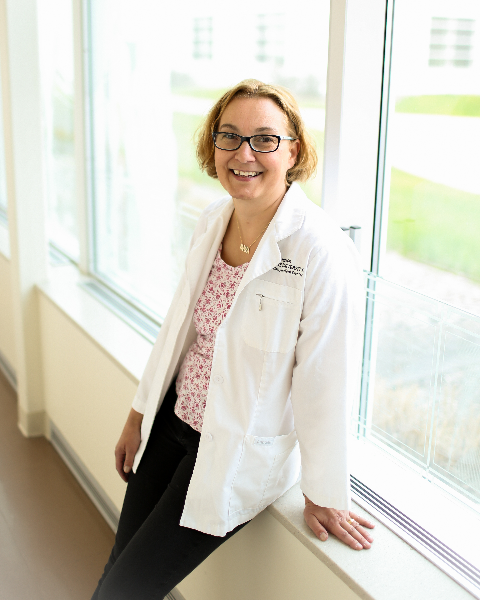Oncology
In Person Only
The Use of Organoids in Veterinary Oncology
Wednesday, June 5, 2024
1:30pm - 2:30pm CT
Location: MCC 102 F
CE: 1.0

Karin Allenspach, Dr.Med.Vet., Ph.D. (she/her/hers)
Professor of Comparative Medicine
University of Georgia
Athens, Georgia, United States
Primary Presenter(s)
Disclosure(s):
Karin Allenspach, DVM, PhD, DECVIM-CA: No relevant disclosure to display
Presentation Description / Summary: Organoids are 3-dimensional in vitro cultures of primary epithelia tissues derived from adult stem cells. When derived from tumor tissue, these cultures have the advantage of representing the tumor microarchitecture more closely than 2-d cell cultures and contain several tumor stem cell clones as well as variably differentiated cells. Organoids have therefore become a pivotal tool in human oncology to elucidate resistance mechanisms of stem cells after treatment, as well as being used for precision-medicine purposes to predict individualized treatment options. We have recently made progress in culturing and characterizing tumor organoids from canine bladder cancer, lung tumors, mammary tumors and pituitary tumors. In this presentation, a state-of-the -art overview of current organoid technology in veterinary oncology will be presented, as well as examples of specific tumor types and how they can help modeling the tumor microenvironment in dogs.
Learner Outcomes: Attendees obtain knowledge on what organoids are and how these in vitro methods can be applied in veterinary oncology. Attendees will gain insight into specific applications of these tools for research and clinical applications, in particular for prediction of treatment response in individual dogs presenting with various tumor types.
Learner Outcomes: Attendees obtain knowledge on what organoids are and how these in vitro methods can be applied in veterinary oncology. Attendees will gain insight into specific applications of these tools for research and clinical applications, in particular for prediction of treatment response in individual dogs presenting with various tumor types.
Learning Objectives:
- Upon completion, learner will be able to understand the differences between 2D and 3D cellcultures and what the advantages of 3D cell cultures are
- Upon completion, the learners will know several examples of how organoids can be used in various types of eithelial tumors of dogs
- Upon completion, the learners will know how organoids can be used ot model the tumor microenvironment




